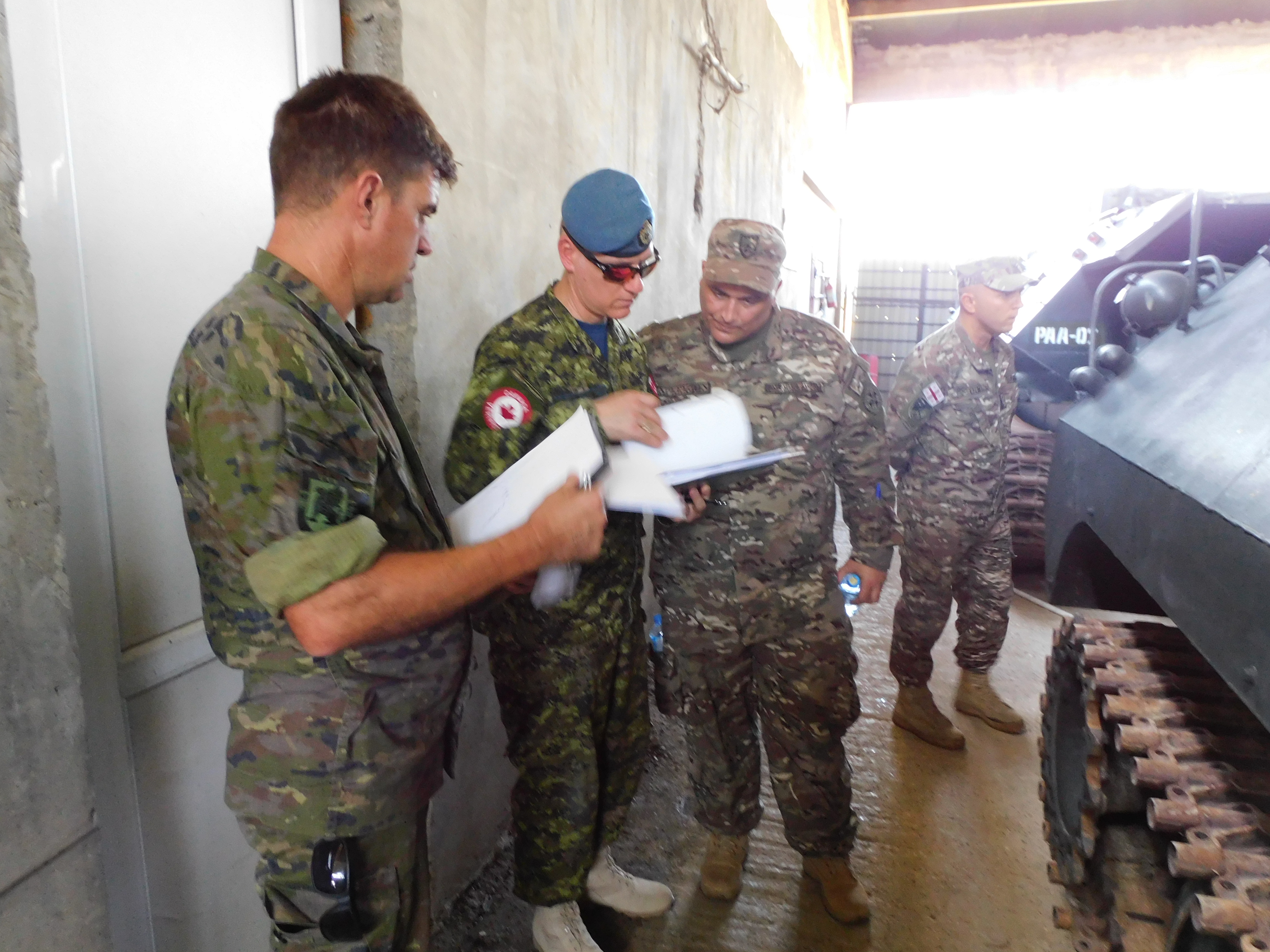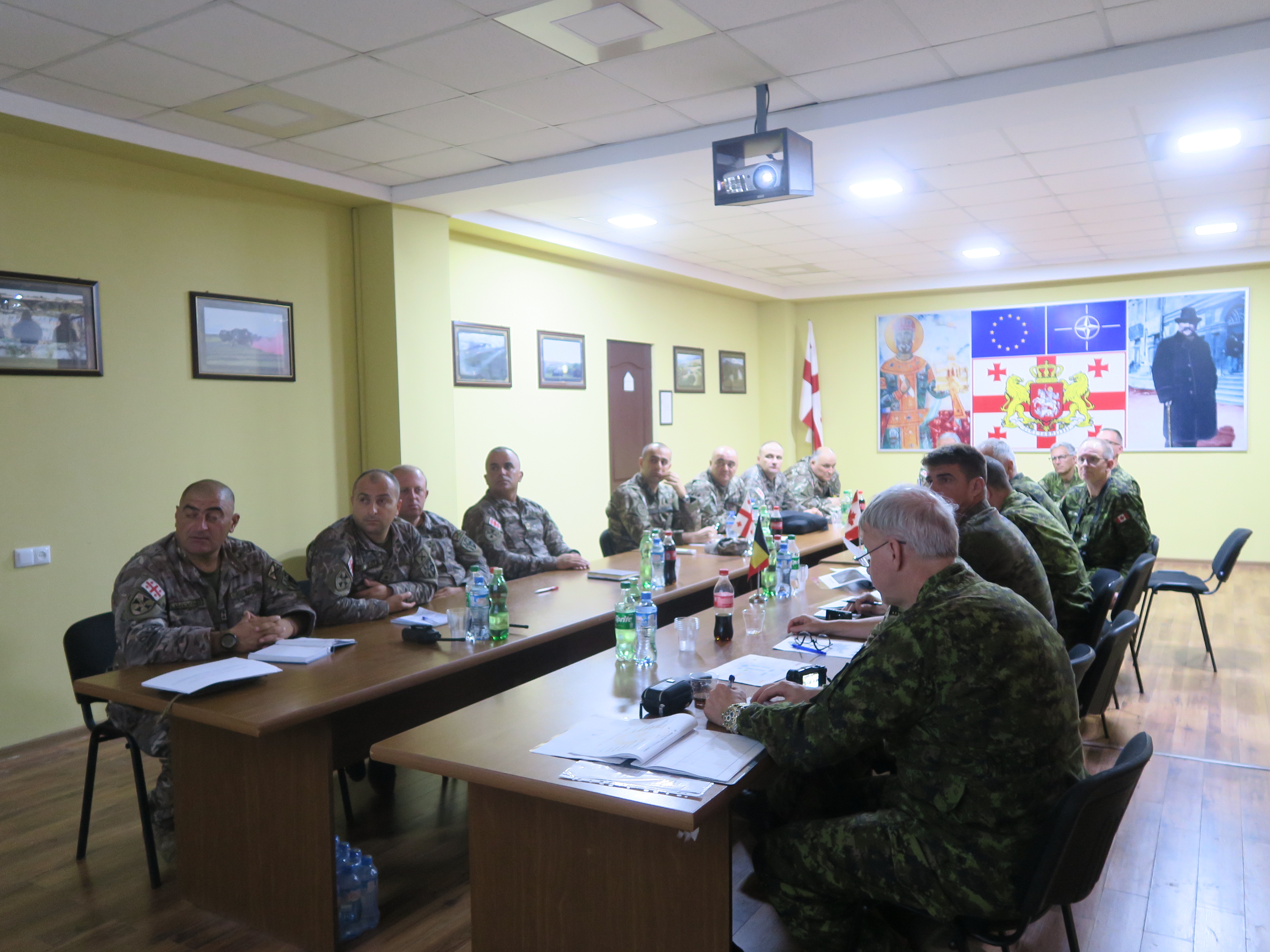
A component of the Spanish Verification Unit (UVE) takes part in the inspection of the CFE Treaty undertaken by Canada in Georgia
- Chief warrant officer Ramón Fuster Menchón has participated as guest inspector together with other guests from Belgium and the Czech Republic.
In a joint effort to guarantee transparency and compliance with international agreements, a component of the Spanish Verification Unit (UVE in Spanish) has taken part as a guest inspector in an inspection of Canada’s Treaty on Conventional Armed Forces in Europe (CFE, or FACE in Spanish) in Georgia.
The mission started in Vienna with a preliminary coordination meeting in which all inspectors received the precise indications for the fulfilment of the individual assigned responsibilities.
The Close Protection Team (EE in Spanish) of the Georgian Verification Unit received the Inspection Team (EI in Spanish) at Batumi airport (Georgia), a moment in which the inspection officially started and the specific Unit where it took place was communicated. The selected Unit was the 6th Field Artillery Regiment (Khoni).
The next day, the EI and EE travelled to the city of Khoni, located approximately at 130 km from Batumi, where they were welcomed with hospitality and courtesy by the Brigadier. After a briefing about the 6th Field Artillery Regiment, a meticulous review of the facilities and an exhaustive count of the materials subject to the CFE Treaty provisions.
After intensive work, the inspection was formally concluded with the signing of a report and the subsequent transfer of the Inspection Team from Batumi to Vienna.
This type of missions are notable not only for the effective cooperation between nations, but also for the commitment of the parties with the defence and compliance with international agreements in the interests of confidence and stability.
The Treaty on Conventional Armed Forces in Europe (CFE) was signed in 1990 in the Conference on the Organisation for Security and Co-operation in Europe (OSCE), but came into force in 1992. The Member States that initially signed this document were 22; however, with the dissolution of the Soviet Union, the number rose to 30 (Estonia, Latvia and Lithuania decided not to join).
The treaty establishes a regime of equipment reduction, of notifications and information exchange, in which each country informs the others about their armament quantities by category and their location, and another regime of verification to check the figures of such exchanges.
Fotos



